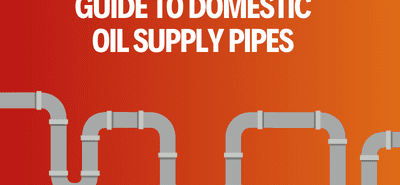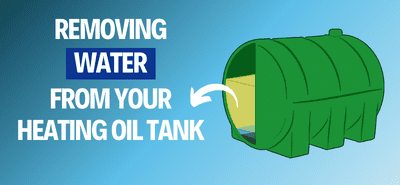Guide to Non-Domestic Oil Storage
Guide to Non-Domestic Oil Storage
This guide applies to non-domestic oil storage tanks including those supplying commercial buildings such as offices, village halls, churches and schools. It also applies to domestic tanks over 3500 litres in capacity supplying single family dwellings. OFTEC recommends that tanks containing waste oil are treated in the same way as fuel supply tanks.
This guide does not cover forecourt (petrol station) operations or agricultural installations.
Construction and type of tank
Oil storage tanks can be constructed from carbon steel, medium density polyethylene or glass reinforced plastic. The shape and size (rectangular, horizontal cylindrical or vertical cylindrical) should be selected by taking into account the available space for the installation and the capacity required to serve the appliance(s).
Underground tanks should only be considered where no other options exist, as they are difficult to inspect and leaks may not be immediately obvious. Information on the installation, decommissioning and removal of underground tanks can be found in the Environment Agency Guidance note PPG 27.
Environmental Protection
To minimise the risk of pollution from an oil spill, non-domestic oil storage tanks exceeding 200 litres must be provided with secondary containment (bunding). This can be achieved by installing an integrally bunded tank or by constructing a concrete or masonary bund, to CIRCA Report 163, around a single skinned tank. The bund must be capable of containing at least 110% of the oil storage tank’s capacity.
It is important to provide facilities for measuring the quantity of oil in a tank. Sight tubes can be used as long as they are located within a concrete or masonary bundbuilt to CIRCA Report 163. They cannot be used on integrally bunded tanks and therefor, electronic or hydrostatic contents gauges are recommended.
Fire Protection
Externally sited non-domestic oil storage tanks should comply with the fire separation requirements in column A of Table 1. Where these separation distances cannot be achieved, a screen wall must be provided between the tank and the hazard (either building or boundry) in accordance with the specifications in column B.
Additionally, where a tank contains more than 3500 litres any openings in the walls between 1.8 and 1.6m away from the tank should be fitted with 1 hour fire resisting glazing or 1 hour fire resisting self-closing doors.
Maintenance
Steel oil storage tanks, when properly installed, may require infrequent maintenance during thier useful life. however, they should be regularly inspected for any signs of corrosion or leakage.
Plastic oil storage tanks usually require little maintenance. However, it is important that they are also inspected for any signs of leakage, discolouration and deformation.
It is recommended that oil storage tanks and their ancillary equipment are inspected on an annual basis by an OFTEC registered Technician.
Bases
The need to provide suitable bases and supports for oil storage tanks is of paramount importance for reasons of both safety and environmental protection.
Tank Bases should be:
- Adequate for the weight of the tank;
- Non-combustable, imperforate and level;
- Constructed of concrete, paving stones or stonework;
- Large enough to extend 300mm beyond all sides of the tank.
Further information on preparing base foundations, erecting piers and laying platforms can be found in OFTEC Techincal Book 3
Internal Oil Storage
An oil storage tank sited inside of a non-domestic building must be fully enclosed within a fire resistant chamber. The walls, roof and doors of the chamber will require a fire rating of between 30 minutes and 4 hours, depending on the class of oil storage and capacity of the tank. Consideration should also be given to access, ventilation, fire extinguishing equipment and electrical safety within the chamber.
Fueldump supply industry standard oil storage tank hydrostatic level gauging and sight gauging from our contents gauge section on our website here :- Oil Storage Tank Contents Gauges












